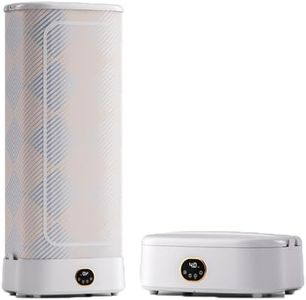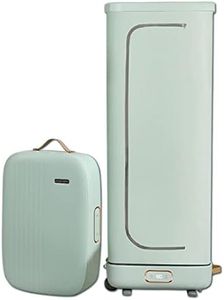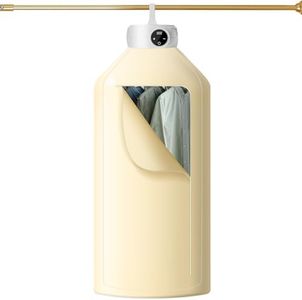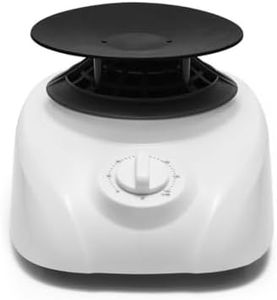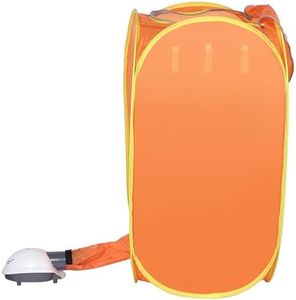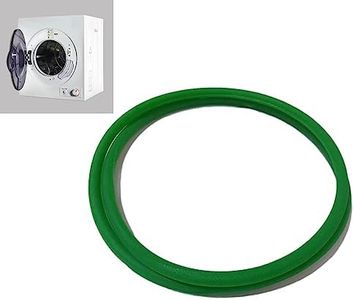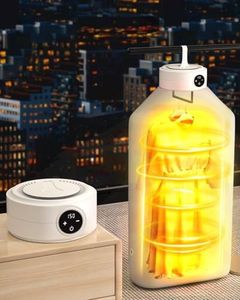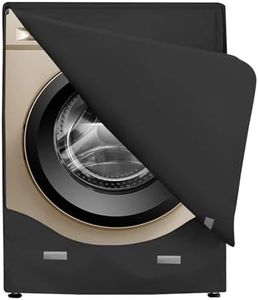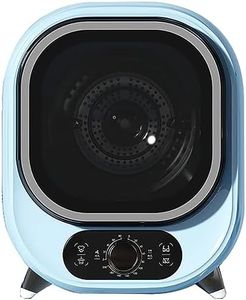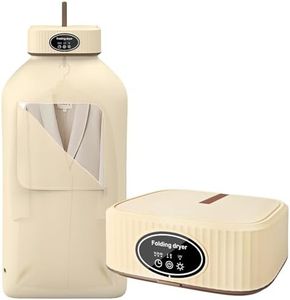We Use CookiesWe use cookies to enhance the security, performance,
functionality and for analytical and promotional activities. By continuing to browse this site you
are agreeing to our privacy policy
10 Best Portable Dryers
From leading brands and best sellers available on the web.Buying Guide for the Best Portable Dryers
Choosing a portable dryer involves more than just picking the one that fits your space. You should think about how much laundry you usually do, where you plan to use it, and what kind of clothes you want to dry. Portable dryers are great for apartments, dorms, or small homes where space is limited and venting options may be an issue. Consider how quickly you need your laundry dried, how easy it should be to move or store the appliance, and any energy restrictions you might have in your living space.CapacityCapacity refers to how much laundry the dryer can hold in one cycle. It’s usually measured in pounds or kilograms. A small capacity (about 5-6 lbs) is suitable for single people or those with little laundry, while larger capacities (up to 13 lbs or more) are better for families or anyone who wants to dry larger items like towels and bedding. Think about how often you plan to use the dryer and how much laundry you usually want done at once; getting a size that matches your typical load will help you avoid doing multiple cycles or having a dryer that’s too bulky for your needs.
Type (Electric or Manual)Portable dryers generally come as electric or manual (spin) types. Electric dryers heat air or rely on tumbling to dry clothes, while manual versions use a spinning force to remove water and require you to hang clothes to air dry afterwards. Electric models are more convenient and hands-off but require a power source, while manual types are better for those who want to save on electricity or use their dryer off-grid. Your choice depends on how much convenience you want and where you’ll be using the dryer most.
Drying MethodDrying method refers to how the portable dryer dries your clothes. Some use heated air (like mini vented tumble dryers), others use spin technology (removing water by spinning fast, but still requiring air drying), and some are airers that blow room-temperature air through hanging clothes. If you want clothes dry straight from the machine, look for heated or tumble models. If energy use or gentle drying are bigger concerns, consider spin or air-only models. Pick based on whether you want fully dried clothes or are comfortable with air drying afterwards.
PortabilityPortability is about how easy the dryer is to move, store, and set up. Some portable dryers are lightweight and have handles or wheels, making them easy to shift between rooms or store in small spaces. Others might be heavier and meant to stay in one place. If you move a lot or have very limited space, a lighter, more compact model will serve you best. If it’s mostly going to stay put, you can opt for a slightly larger machine.
Power and VoltagePower and voltage refer to what kind of electrical connection your portable dryer needs. Most require a standard household outlet, but some may need a higher voltage or have adjustable settings. If you want a dryer that works in various locations (like overseas or in an RV), check for models with adjustable voltage or power requirements compatible with where you’ll use it. Always make sure the dryer matches your home or location’s electric system.
Noise LevelNoise level is how loud the dryer is during operation. Some portable dryers can be quite noisy, which can be disruptive in small living spaces or shared environments. Consider whether you’ll be using the dryer in a place where noise matters, like a studio apartment or next to bedrooms. If peace and quiet are a priority, look for models advertised as quiet or check user reviews about noise.
Drying TimeDrying time means how long it takes the dryer to finish a cycle and dry your clothes. Faster drying times are convenient but may use more power or be harder on delicate clothing. Slower times may be gentler and use less energy but require more patience. Think about how quickly you need your laundry ready – frequent, fast-drying needs point toward models with shorter cycles, while occasional users might be fine waiting a bit longer.

